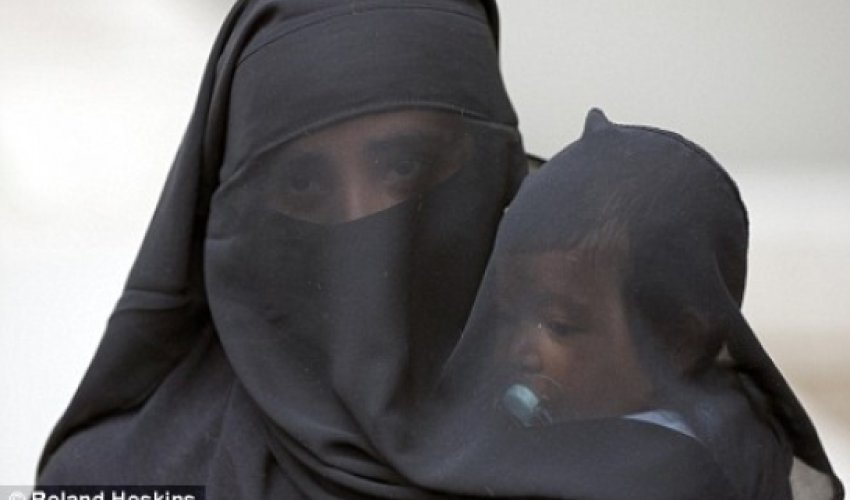Disproving the Muslim Demographics sums

That was the challenge that confronted the More or Less team when we tried to unpick a claim that appears in the infamous Muslim Demographics YouTube video that "in the Netherlands, 50% of all newborns are Muslim."If life was easy it would be possible to phone up the Dutch government's official statistics office, Statistics Netherlands, and simply ask them what proportion of babies are born to Muslim families.But life is not easy. Like many European countries, the Netherlands does not routinely collect information about religious belief as part of its population statistics.There is a tradition in Europe that religious belief is a matter of personal conscience and should not be mixed up with the detailed data that is used to track births, deaths and migration.However, the Dutch statisticians do conduct surveys of religious belief independently of their wider population data.And we know from their latest research that roughly five per cent of the population in the Netherlands is Muslim - around 850,000 people.So five per cent of the population is responsible for 50 per cent of the babies?It sounds pretty implausible when you put it like that, but how implausible is it exactly? Can we put some numbers on it?AssumptionOne approach is to assume that the statement is true and then find out what else would have to be true for the numbers to add up.We know that the female population of the Netherlands in 2008 was 8,293,326. We can estimate the female Muslim population as 5 per cent of this - or 414,666 - leaving 7,878,660 non-Muslim women.And we know that last year there were 184,634 children born in the Netherlands.So if the Muslim Demographics video is right, 414,666 Muslim women gave birth to 92,317 babies - the same number as 7,878,660 non-Muslim women gave birth to.That means roughly one in four Dutch Muslim women would have had a baby last year, compared with only one in 85 non-Muslim women.Or to put it another way, the birth rate of Muslim women would need to have been about 19 times greater than their non-Muslim neighbours for the claim in the video to be true.But hang on a minute. Doing the sum this way makes one very big assumption: that the populations of Muslim and non-Muslim women in the Netherlands have the same age distribution.And it is not unreasonable to think that a greater proportion of Muslim women may be of child-bearing age.But what proportion exactly? This takes us right back to the problem we started with: we do not have demographic data broken down by religious belief.ComparisonBut we can estimate the proportion of Muslim women that are of child-bearing age by using the age distribution of Dutch citizens who originally came from Morocco and Turkey, the most common countries of origin for Dutch Muslims.Looking at the numbers for 2008, 61 per cent of women of Turkish origin were aged between 15 and 49 - the age group typically taken as child-bearing.The figure for women of Moroccan origin was 57 per cent. For women of Dutch origin, only 45 per cent were in this age group.Using the higher of the two figures to estimate the child-bearing Muslim population, that gives us an estimated 252,946 fertile Muslim women and 3,545,397 fertile non-Muslim women in the Netherlands.Now if we redo our earlier calculation using these figures, we can estimate that more than one in three Muslim women of child-bearing age would have given birth last year, but less than one in 38 non-Muslim women in the same age group.That means, even when you adjust for age differences between the two populations, fertile Muslim women would still need to be giving birth at 14 times the rate of their fertile non-Muslim neighbours.Total fertility rateLet us put all this in context.The figures imply a crude birth rate for Muslims in the Netherlands of 112.5 births per 1,000 people last year.According to the United Nations, the country with the highest birth rate in the world is Niger with 54.1 births per 1000, per year. And the birth rates in Turkey and Morocco are 18.4 and 20.5 births per thousand, respectively.We can also make a similar comparison using the age-adjusted estimates of the fertile populations by using a measure called the 'total fertility rate'.The total fertility rate (TFR) is the average number of children a group of women would have if they experienced the current fertility rates of women in different age groups throughout all of their child-bearing years.In plain English, it represents the fertility rate of an imaginary woman who will have, in each period of her life, the typical fertility that women of each age-group have right now.By multiplying our estimated population of all fertile Dutch women by the current total fertility rate for the Netherlands we can calculate a hypothetical next generation of 6,609,117 children.By assigning half of this generation to each group, we can estimate the total fertility rate that fertile Muslim and non-Muslim populations would each need to have for the claim to be true.The estimated TFR for Dutch Muslims would be 13.06.According to the UN, the country with the highest total fertility rate in the world is Niger with a TFR of 7.15. And the TFR in Turkey and Morocco is 2.13 and 2.38 respectively.This would also imply an extremely low fertility rate for the non-Muslim population. The estimated TFR for non-Muslims would need to be just 0.93. According to the UN, the country with the lowest total fertility rate in the world is Bosnia and Herzegovina with a TFR of 1.22.It is implausible that "in the Netherlands, 50 per cent of all newborns are Muslims".It would mean that the Muslim and non-Muslim populations have some of the most extreme fertility rates found anywhere in the world, at opposite ends of the spectrum, while living in the same country.(BBC)Bakudaily.Az
Latest news 




































 Photo
Photo 



 Video
Video 

